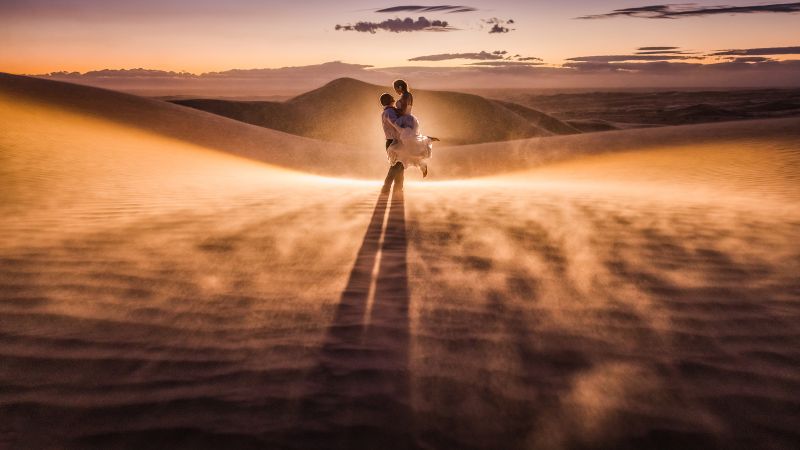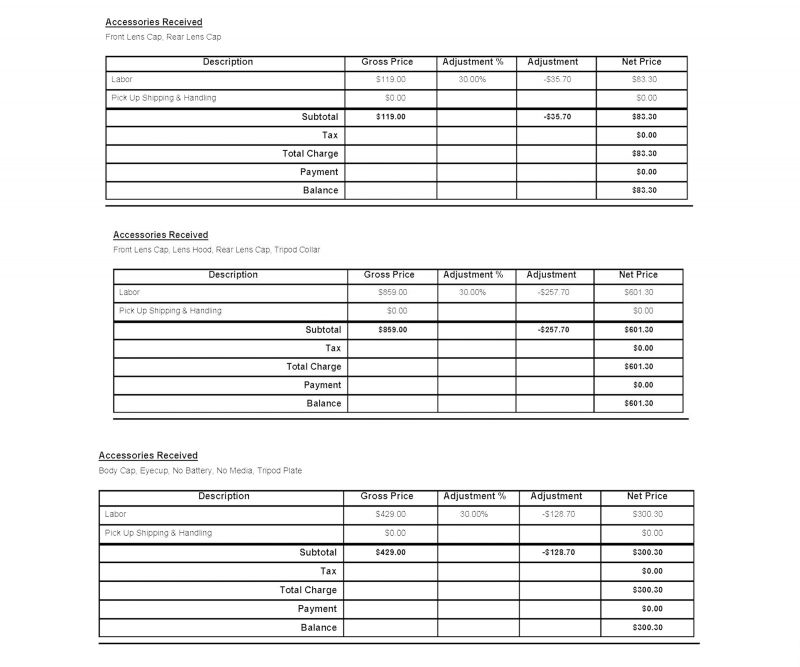Being a professional photographer lends itself to unexpected experiences on the job. The nature of the job is very fast paced and being prepared for any circumstances is a crucial skill to have. This holds especially true when shooting on-location in dynamic environments like the desert. It is imperative that you plan accordingly to successfully navigate such shoots, against whatever unfolds. During a recent engagement session, for example, we were hit by a sudden windstorm of up to 30 miles per hour. Today, I’ll be walking through some of my photoshoot tips for working in unexpected weather conditions.
Video: Photoshoot Tips for Working in Unexpected Weather Conditions
Be Prepared For Anything

What began as perfect weather and great photos turned into a wild windstorm that posed tons of challenges and caused us to change course. Fortunately, I had years of experience to help guide me through the rest of the shoot. We agreed to continue through the weather and captured this stunning image.

When it comes to shooting in extreme environments, I suggest, well… Don’t. Joking aside, always check the weather forecast. If the forecast predicts extreme weather, it’s best to steer clear and try again later. However, if the forecast is wrong or you absolutely must shoot, proceed with caution and follow these photoshoot tips.
Tip #1: Always Carry a Rain Shield
Rain shields don’t weigh much and it’s better to avoid ruining your gear and ending up with a hefty repair bill. They slip right over your camera and can protect against many elements including rain and sand. You can find them on Adorama here.
Tip #2: Switch to a Prime

Zoom lenses have many moving parts and this means that they’re more likely to be damaged by sand or water. While newer lenses are weather-resistant, they can still sustain damage if left exposed for too long. If you notice water or sand getting into the lens, stop using them. Continuing to use them may further damage the internal components and leave you with a large repair bill. Instead, switch to a prime lens.
Tip #3: Change Lenses While Under Cover
If you need to change your lens, be sure to do so under a covered area free from the wind. A car or some other shelter will work. Make sure your camera is turned off and that no additional elements make it into your camera body.
Tip #4: Shoot in Intervals
Unexpected weather can quickly turn the photoshoot into a high pressure environment. Be sure to communicate the plan with your team and your clients. If everyone is in agreement to continue, space out the shots into intervals. Keep exposure to the weather limited. Take frequent breaks to dry off, warm up, or clear the sand.
Tip #5: Use Frameworks

These sudden circumstances will put your experience and knowledge to the test. Extreme weather might limit your ability to experiment or try new things. Instead, You have to rely on what you know. A crucial photoshoot tip is to create a framework for your process. I relied on the C.A.M.P. framework to quickly set up this shot.
How I Captured the Shot in 30MPH Wind
C: Composition

I scouted for the perfect location for our final image while my clients waited in the car. Then, I found this perfect spot with the rolling hills, backlit by the sky, and the sand visibly blowing across the dune. I planned to place my couple directly in the center of the frame. The dark dune will help the couple stand out against the flash.
A: Ambient Light
Knowing I’m going to use flash, I exposed to keep as much detail in the sky as possible without losing shadow detail. My final settings were ISO 800, f/1.4, at 1/200 sec.
M: Modify/Add Light

Next, I added in my Profoto B10 at about 1/4 power with a CTO gel.
P: Photograph

Once that was done, I brought in my couple for the final images. I instructed them on the poses before bringing them out since communication would be difficult in the wind. If you have any action shots planned, be sure to rehearse them by the car or under shelter. I first began with a simple couple’s pose which will be our “safe” shot.
Then, we moved on to a lifting pose. Action shots can be difficult to get right, and extreme weather can make it even harder. Today’s final photoshoot tip is to begin with a “safe” shot. This way, if the action shot doesn’t work out, you’ll still be left with a great usable image.
Post Production


The exposure was perfect and left us with plenty of latitude to bring out all the details. I used Visual Flow’s Modern Presets to get this beautiful final edit.
Conclusion
I love the photos that came out of this great experience. The team had a great time and the couple had a great time despite the unexpected circumstances. At the end of the day, the photos represent a great memory shared between all of us. This is important for your clients as they will remember you not just for your photos, but the experience of capturing those photos. You can learn more about this in the Psychology of a Photograph where I explain how critical the client experience is for photographers running a business.
Related Reading: The Role of Psychology in a Successful Photography Business
I hope you enjoyed these photoshoot tips for working in unexpected weather conditions. It’s important always be prepared, learn from mistakes, and build on every experience. You never know when or what the next surprise will be. For tutorials on wedding photography to learning how to work with clients and build a successful photography business, check out SLR Lounge Premium. You can also visit Visual Flow for more intuitive lighting-based Lightroom presets.
Don’t miss our next episode of Mastering Your Craft on Adorama’s YouTube channel next week! If you want to catch up on all the episodes, make sure you check out our playlist!





Get Connected!